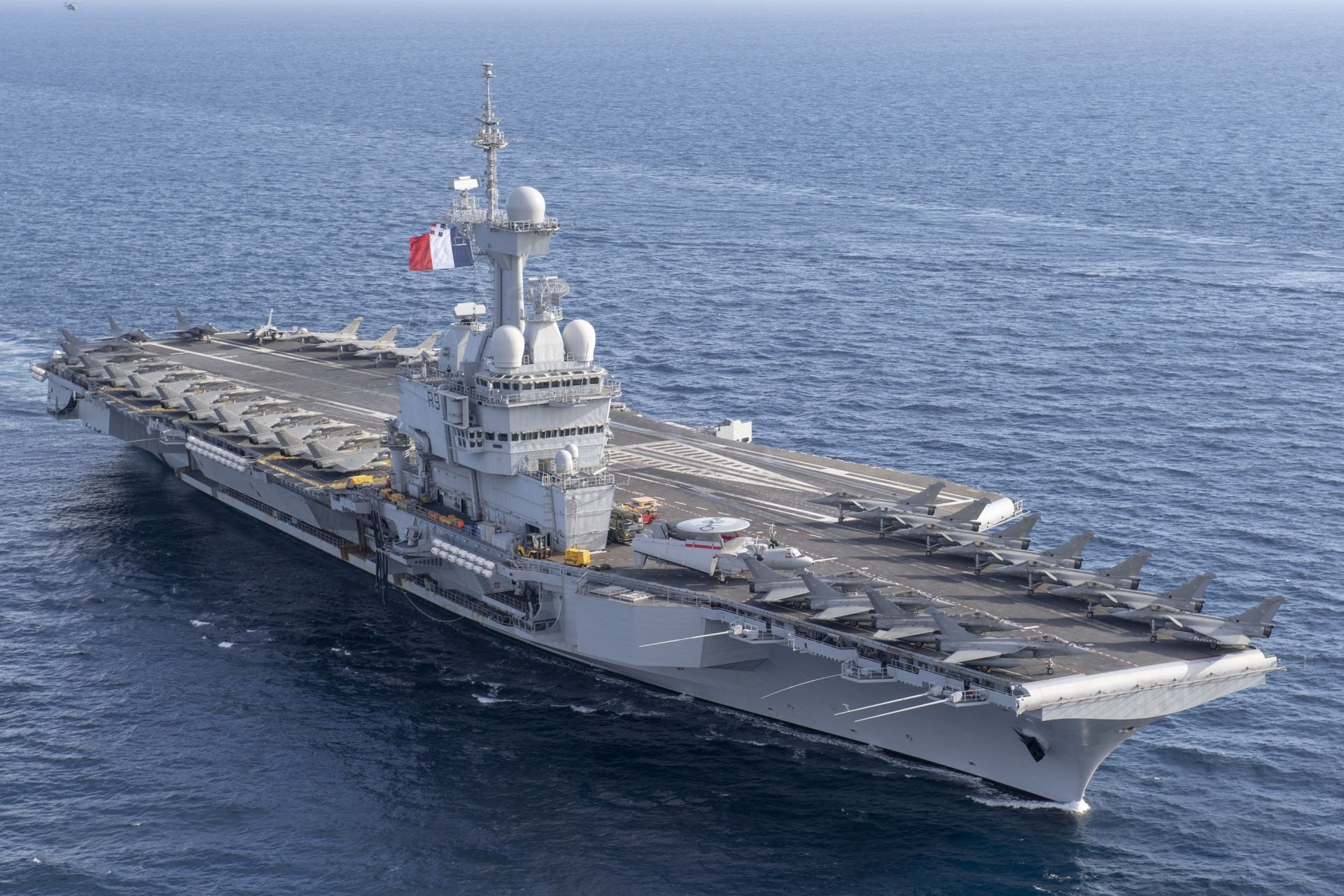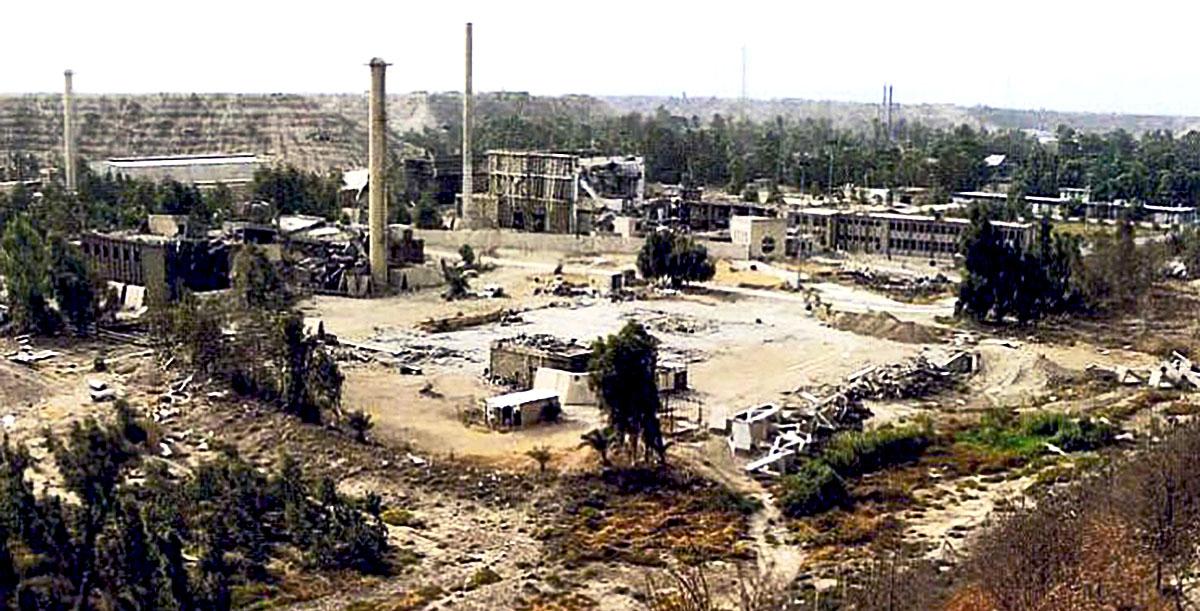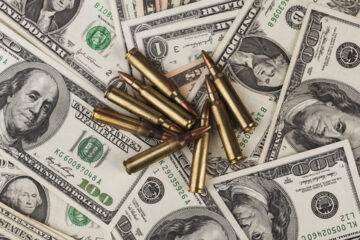Nuclear Proliferation and World Stability
What you want to understand… 🤔
- Do nuclear weapons prevent conflicts?
- What is the purpose of acquiring nuclear weapons?
- What are the risks of uncontrolled nuclear proliferation?
- What type of anti-proliferation measures are there?
- How risky is the development of tactical nuclear weapons?
The bombings of Hiroshima and Nagasaki in August 1945 symbolised the advent of a nuclear era. Of a paramount importance during the Cold War, the two superpowers’ nuclear arsenals were used to further their respective geopolitical interests worldwide. Only the US and the USSR shaped the international discourse on nuclear technology and they firmly promoted non-proliferation. It was embodied with the Non-Proliferation Treaty (NPT) signed in 1968 and that endeavoured to prevent the spread of nuclear technology, material and weapons.
Horizontal nuclear proliferation: more countries posses nuclear weapons.
Vertical nuclear proliferation: an increase of a country’s stock of weapons.
Despite the end of the Cold War, the emergence of a multipolar world has maintained the question of nuclear proliferation among major international security concerns. Nowadays, 9 countries (USA, Russia, UK, France, China, Israel, India, Pakistan and North Korea) own nuclear weapons including India and Pakistan that didn’t sign the NPT and North Korea that withdrew from it in 2003.
Some argue that nuclear proliferation can improve international stability i.e. reduce the probability of conflict occurrence and create appeased international relations. However, in this essay I will argue that nuclear proliferation should be fought as strictly as possible since it disrupts international stability.
I. The stability/instability paradox: a limited deterrent power that doesn’t prevent conflicts
A. When can nuclear weapons be used?
There are few situations in which nuclear weapons can be used. A rational state actor will resort to nuclear strikes either in retaliation to a nuclear attack or when its survival is jeopardized i.e when its territory risks being completely conquered and annexed 1. A state leader can also deliberately launch a nuclear war even though it is very unlikely. We will further discuss this point later in this essay.
B. Shift from large-scale direct wars to minor and indirect conflicts
As James Dunnigan pointed out in 2003, “no one wants to use nuclear weapons because nearly every world leader recognizes the no-win aspect of a nuclear war” 2. Besides, Kenneth Waltz assumes that states are rational, self-preserving and risk averse which implies that they will never risk being totally annihilated 3.
Nuclear weapons’ high destruction potential makes the intention to use them not credible. As a result, if state actors reason by backward induction they will understand that as long as they don’t use nuclear weapons themselves and don’t threaten the survival of states that own some, or that have allies that own some, then they still can start conflicts without risking sparking a global nuclear war. In fact, according to the stability/instability paradox when states have nuclear weapons the probability of direct large-scale wars decreases whereas it increases for low-intensity and indirect conflicts4. That’s why during the Cold War the US and the USSR never opposed directly military and resorted to proxy wars like in Afghanistan (1979-1992).

Therefore, nuclear proliferation is not a factor of international stability. It only shifts the source of instability from direct large-scale wars to smaller and indirect conflicts.
C. What I think is the actual purpose of acquiring nuclear weapons
I believe that acquiring nuclear weapons is first of all a way to assert one’s status as a major global power and thus have a more leverage in international negotiations. The fact that France owns an aircraft carrier serves the same goal: it is first and foremost a representative of France’s technological and financial capabilities.

Showing that one can afford nuclear weapons may lure one’s opponents into believing that one has an overall powerful army. Nuclear proliferation is therefore destabilizing since it alters the balance of power on the international stage by changing the status of nuclear weapons owners without further consideration for the overall might of their army.
II. Too many uncontrollable factors around nuclear proliferation to ensure security
A. Variability of leadership implies variability of foreign policy
In “How to Make War” (2003), James Dunningan underlines the possibility, though very unlikely, that “a national leader could deliberately order missile launchs”5. We should bear in mind that a state in itself is not dangerous but its leadership can be. For instance, before 1979, Iran was a US ally under the Shah but then the Islamic revolution turned it into a fierce opponent.
Even if a country seems trustworthy, we should prevent it from acquiring nuclear weapons because its leadership can change very rapidly and so does its foreign policy. Overconfidence or lack of emotional control from a national leader can be the cause of a nuclear war. It was one of the causes of World War II that was sparked in part due to Adolf Hitler’s overconfidence in his ability to create a worldwide 3rd Reich.
B. Accidents
A nuclear war could also break out following an accident of human or technical nature6. Between 1965 and 1983, 233 US weapons accidents were reported in the world and most of them happened when nuclear material was being transported7. Regarding the USSR, on October 3, 1956, an explosion occurred in a Soviet submarine that was sailing nearby Bermuda. Three days later it sank with the 16 nuclear missiles and 2 reactors it had on-board. The risks of involuntarily sparking a nuclear war are too high to let nuclear proliferation happen.
C. Precautionary principle and intransigence
Leadership instability and the risks of accidents are some of the reasons why we should apply the precautionary principle and make sure that no one gets nuclear weapons. Nonetheless, it seems extremely unlikely that countries with nuclear weapons decide unanimously to destroy their arsenals. Besides, it may even be useless since they cannot “destroy” the technology and knowledge to produce such weapons.
III. Anti-proliferation measures can have destabilizing effects
Nuclear proliferation is a true problem because measures put in order to keep it under control have destabilising effects.
A. Preventive wars
Some status-quo-oriented states may be tempted to carry out pre-emptive attacks before a nuclear threat becomes imminent. A preventive war’s objective is to hinder the expansion of a country’s nuclear arsenal and potentially destroy it. However, usually such an intervention only delays the development of a country’s nuclear program8. An example of a pre-emptive attack on nuclear facilities can be found in 1980 when Iran attempted, though unsuccessfully, to destroy the Iraqi nuclear reactor at Osirak. The next year, in June 1981, Israel managed to bomb it and thus undermined Iraq’s effort to acquire the nuclear bomb for several years9.

B. Economic sanctions
Measures to stop nuclear proliferation include economic and diplomatic sanctions. For instance, at the end of the 1970s and the beginning of the 1980s, the US took unilateral sanctions against South Africa, Taiwan, Brazil, Argentina, India and Pakistan because they were trying to acquire Enrichment and Reprocessing (ENR) technologies. For instance, the US Arms Control Export Act of 1976 imposed an arm embargo on countries engaged in the unsafe development ENR technologies10. However, these measures can cause the impoverishment of local populations which can lead local political oppositions to organise coups that would bring more instability11.

It was notably the case when Muammar Gaddafi was willing to get nuclear weapons. According to Meyer, in 1969, shortly after seizing power in Libya, he would have offered $1 billion to China in exchange for an atomic bomb12. Economic sanctions related to the development of a nuclear arsenal were imposed from 1986 to the mid-2000s. I am not saying that these sanctions were the cause of the 2011 Arab Spring but I think that it contributed to the general despondency associated with the reign of Gaddafi and that eventually led to his demise13.
IV. Nuclear terrorism
Nuclear proliferation is also dangerous for international stability because nuclear material might end up in the hands of terrorist groups.
A. Proliferation begets proliferation
According to Scott Sagan “proliferation begets proliferation” because, in order to balance the power of a country that has recently acquired nuclear weapons, its neighbours will seek to do the same14. William Spaniel illustrates this chain reaction by giving the example of the sharing of ENR technologies15. As a matter of fact, the USSR cooperated with China that then helped Algeria, Iran and Pakistan. After that, the Pakistani doctor Abdul Qadeer Khan set up an illegal network to smuggle nuclear material to North Korea, Libya and Iran16. Then North Korea shared ENR technologies with Syria17.
Eventually terrorist groups can steal or even purchase nuclear material from rogue or weak states. However, let’s not forget that one cannot decide to make nuclear weapons at the drop of a hat just because one has access to nuclear material. Indeed, it requires substantial financial and technological means that one may not have.
B. Terrorists with radioactive bombs ?
Nonetheless, nuclear terrorism is not a ridiculous idea as Director of National Intelligence Admiral Michael McConnell pointed out in 2007 regarding al-Qaeda’s ambition to acquire chemical, biological, radiological and nuclear (CBRN) weapons18.

If this extremist group managed to lay hands on fissile material (highly enriched uranium), it could turn it into powerful weapons such as gun-style bombs (similar to those used by the US on Japan in 1945) that are rather straightforward to build according to William Spaniel. Even if a terrorist group cannot figure out how to make proper nuclear weapons, it can still create an explosion near fissile material in order to spread radiations all around the detonation site.
C. Too difficult to fight terrorist groups therefore the only solution is to tackle the problem at its roots
If nuclear weapons end up in terrorist groups’ hands, it becomes almost impossible to deter such organisations from using them. There is no point in launching nuclear strikes against them since there would be too many civilian casualties because civilians still live in cities held by terrorists. Furthermore, even if nuclear strikes are decided, it would align with these terrorist organisations’ goals. For instance, Daesh’s long term objective was to provoke the End of Times by sparking an apocalyptic conflict against infidel armies. It would have resulted in the death of all human beings and only those who believed in Allah and did “good deeds” would have lived an endless life19,20. In fact salafi-jihadists wouldn’t fear nuclear retaliation: they would wish it. Since it is too difficult to deal with terrorist groups that own nuclear weapons, the international community should tackle the problem at its roots i.e. prevent as much as possible the proliferation of nuclear weapons that may end up in rogue states’ hands and even terrorist hands.
V. Tactical Weapons

A proliferation risk that shouldn’t be overlooked is the development of tactical nuclear bombs that could normalise the use of nuclear weapons. It is commonly admitted that the size distinction between tactical and strategic weapons is 100 kilotons21. Tactical ones are sometimes called “mini-nukes” and during the Cold War some that fitted into suitcases were even developed22. These weapons don’t directly lead to a total annihilation of their target, which makes decision-makers less hesitant to use them. However, the risk of escalation from the tactical to the strategic level is real when two nuclear-weapon owners confront each other23.
Conclusion
From what we have discussed, we can conclude that nuclear proliferation represents a real threat for international stability. First of all, we saw that nuclear weapons’ deterrent power is limited since it increases the occurrence of minor and indirect conflicts. Besides, a country acquiring nuclear weapons disrupts the international balance of power. Additionally, there are too many unpredictable variables surrounding nuclear proliferation like the risk of accidents and the dramatic change of a country’s leadership. Moreover, a state seeking to acquire nuclear weapons will result in other states trying to prevent it by resorting to preventive wars or economic sanctions. Furthermore, nuclear material might end up in the hands of terrorist groups that are too difficult to fight for conventional armed forces. We also saw that tactical nuclear weapons risked normalising the use of nuclear bombs and could lead to rapid escalations of tensions.
Therefore, the international community should apply the precautionary principle and prevent nuclear proliferation at all costs. Nonetheless, it has to face the “Dual-use” problem: nuclear power can serve to produce electricity for peaceful purposes. It also represents a solution to face climate change.
Sources
- Dunnigan, James F. “Chemical, Biological and Nuclear Weapons”. How to make war: a comprehensive guide to modern warfare in the twenty-first century, 4th ed, Quill, 2003, p. 413.
- Dunnigan, James F. “Chemical, Biological and Nuclear Weapons”. How to make war: a comprehensive guide to modern warfare in the twenty-first century, 4th ed, Quill, 2003, p. 433.
- Sagan, Scott Douglas, et Kenneth N. Waltz. The spread of nuclear weapons: an enduring debate. 3rd ed, W.W. Norton & Co, 2013.
- Rauchhaus, Robert W. Evaluating the Nuclear Peace Hypothesis. Journal of Conflict Resolution, 53, 2009.
- Dunnigan, James F. “Chemical, Biological and Nuclear Weapons”. How to make war: a comprehensive guide to modern warfare in the twenty-first century, 4th ed, Quill, 2003, p. 433.
- Sagan, Scott Douglas. The Limits of Safety: Organizations, Accidents, and Nuclear Weapons. Princeton University Press, 1995.
- Tiwari, Jaya, and Cleve J. Gray. U.S. Nuclear Weapons Acccidents. POGO, Center for Defense Information November 2011, http://physmrcoates.weebly.com/uploads/1/4/2/2/14227421/nucleaer_accidents_summary.pdf.
- Kreps, Sarah E., and Matthew Fuhrmann. Attacking the Atom: Does Bombing Nuclear Facilities Affect Proliferation? Journal of Strategic Studies, vol. 34, no 2, April 2011, p. 161‑87. DOI.org (Crossref), doi:10.1080/01402390.2011.559021.
- Martel, William C. Nuclear Coexistence: Rethinking US Policy to Promote Stability in an Era of Proliferation. Diane Pub Co, 1994.
- Gebhard, Paul. “Not by diplomacy or defense alone: the role of regional security strategies in US proliferation policy” Washington Quarterly 18 (Winter 1995), p. 167-79.
- Spaniel, William. Bargaining over the bomb: the successes and failures of nuclear negotiations. Cambridge University Press, 2019.
- Meyer, Stephen M. The Dynamics of Nuclear Proliferation. University of Chicago Press, 1984.
- Libya Nuclear Weapons Program and Nuclear Disarmament. NTI, January 2015, https://www.nti.org/learn/countries/libya/nuclear/.
- Sagan, Scott D. Why Do States Build Nuclear Weapons? Three Models in Search of a Bomb. International Security, vol. 21, no 3, January 1997, p. 54‑86. DOI.org (Crossref), doi:10.1162/isec.21.3.54.
- Spaniel, William. Bargaining over the bomb: the successes and failures of nuclear negotiations. Cambridge University Press, 2019.
- Collins, Catherine, and Douglas Frantz. The Long Shadow of A.Q. Khan. January 31, 2018. https://www.foreignaffairs.com/articles/north-korea/2018-01-31/long-shadow-aq-khan.
- Arms Control and Proliferation Profile: Syria | Arms Control Association. juin 2018, https://www.armscontrol.org/factsheets/syriaprofile#:~:text=Syria%20currently%20does%20not%20possess,could%20produce%20plutonium%20for%20weapons.
- Graham, Bob, and Jim Talent. Nuclear Proliferation Endangers World Stability. The Heritage Foundation, September 15, 2008, https://www.heritage.org/defense/commentary/nuclear-proliferation-endangers-world-stability.
- McCants, William F. The ISIS apocalypse: the history, strategy, and doomsday vision of the Islamic State. First edition, St. Martin’s Press, 2015.
- Surah Al-Baqarah – 2:81 and 2:82. https://quran.com/2/81-82?translations=131.
- Dunnigan, James F. “Chemical, Biological and Nuclear Weapons”. How to make war: a comprehensive guide to modern warfare in the twenty-first century, 4th ed, Quill, 2003, p. 439.
- Nicholas, Horrock. FBI Focusing on Portable Nuke Threat. UPI, December 21, 2001, https://www.upi.com/Top_News/2001/12/21/FBI-focusing-on-portable-nuke-threat/90071008968550/.
- The Threat of Uncontrolled Nuclear Spread. Bulletin of the Atomic Scientists, Vol 31, n°5, Mai 1975.



4 Comments
A short History of the Iran-US relationship - geopol-trotters · 29 October 2022 at 9:41 am
[…] Rohani initiated negotiations on the Iranian nuclear program with the 5 members of the UN Security Council (the USA, Russia, China, the UK and France) and […]
History of China and the World since 1949 - geopol-trotters · 31 August 2021 at 1:11 pm
[…] the removal of Soviet missiles and two years later China managed to make explode its first atomic bomb. In 1969, the world held its breath as it witnessed a seven-month armed conflict between China and […]
Naval power, an important component of defence policy - geopol-trotters · 30 August 2021 at 3:20 pm
[…] often not planned. With regard to deterrence, the only fact that a country owns SSBNs, which pose a threat of nuclear retaliation, indirectly deters potential enemies from planning […]
A new Cold War between Russia and the West? - geopol-trotters · 27 August 2021 at 2:25 pm
[…] some in Japan and South Korea. Nonetheless, in February 2021 the new-START treaty, which is a nuclear arms reduction treaty between the US and Russia, has been extended until […]